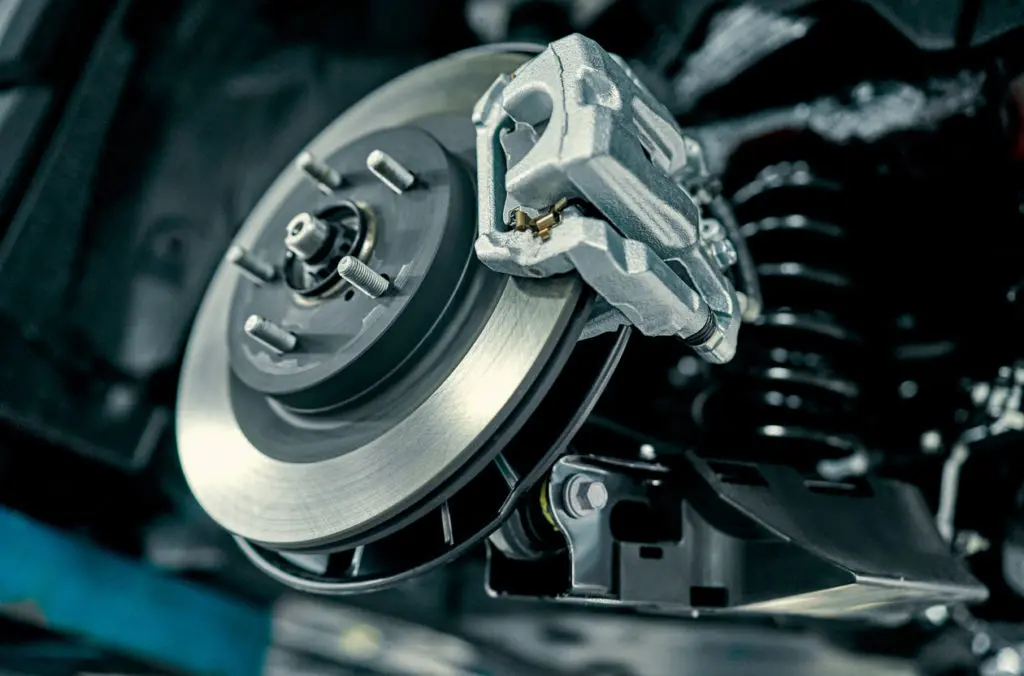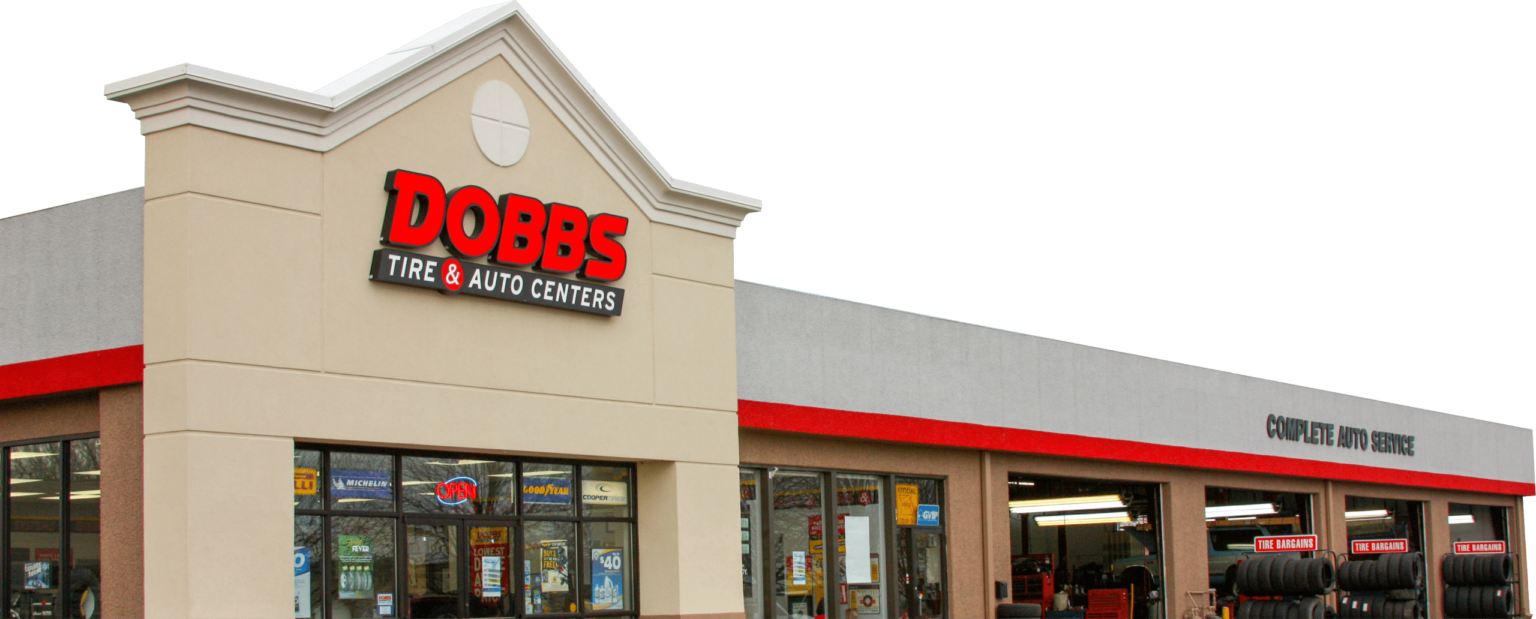Car Brakes, An Anatomy Lesson
If you really get right down to it, like remote-control cars, our vehicles are designed to do three things: go backwards and forwards, turn left and right, and stop. Unlike remote-control cars, your car or truck carries you and your loved ones while doing these things, so it’s understandably built just a touch tougher. Of course, the engine and transmission provide the “go” portion, and the steering system provides the “turn” function, but what about the “stop” part?
A Short History of Brakes
Stopping your car is left to the brake system, the origins of which go back thousands of years, though not nearly as far as the wheel, which was invented sometime in 3,500 BCE. Of course, when someone discovered that you could put two wheels on a box and make a chariot, brakes were hardly necessary. After all, horses are born with a full suite of powertrain innovation, from an efficient engine and automatic transmission to cruise control, anti-lock brakes, and traction control.
Still, centuries before the Roman Empire, crude brakes were developed that could slow and stop wheeled carts, taking the burden off the horses. These early brakes were simply wooden blocks pressed directly to the wheel by an effort-multiplying lever, which was operated by the driver. Fast-forward a couple millennia, and modern car brakes are much the same, but far more powerful than the ancient Romans could ever have imagined.
Basically, it’s all about friction, and your car brakes are designed to bring you to a safe stop no matter what the conditions, but how does it do this? Like the first brake systems designed in ancient times, your brake system multiplies your effort and presses on a wheel. If the wheel is moving, pressing the brake will slow it down and stop it. If the wheel is not moving, pressing the brake will keep it that way. It all starts with a simple press of the brake pedal…
How Do Your Car Brakes Work?
When you step on the brake pedal, a lever pushes a plunger in the master cylinder. A brake booster multiplies your input force to help you apply even more force to the master cylinder. A switch also illuminates the brake lights to alert other drivers. The master cylinder is filled with brake fluid, which is compressed and distributed, via brake lines, to the brakes at each wheel. At each wheel, hydraulic pressure is converted to mechanical force to stop your vehicle. You may be able to apply 150 pounds of force to the brake pedal, but typical booster and piston arrangements can give the front brakes nearly 2,000 pounds of clamping force each! Here’s how each brake system does it:
How Disc Brakes Work
The brake rotor rotates with the wheel or axle, while the brake caliper is fixed to the vehicle. When you step on the brake pedal, the caliper squeezes the rotor. Brake pads are made of special materials that generate a lot of friction and can cope with the heat. Because the front car brakes do most of the braking while moving forward, up to 70%, they are made of heavier materials and the rotors are thicker and of greater diameter than the rear brakes.
How Drum Brakes Work
The brake drum rotates with the wheel or axle and the brake shoes are fixed to the vehicle. When you step on the brake pedal, the wheel cylinder expands, pushing the brake shoes outwards against the drum. Drum brakes are not as efficient as disc brakes, which is why automakers do not equip cars with front drum brakes anymore. Still, drum brakes are less expensive than disc brakes, which is why some economy cars are still equipped with them in the rear.
The Parking Brake
The parking brake does not rely on the hydraulic system, but on a cable or electric servo system. Pulling on the hand lever, depressing the parking brake pedal, or engaging the electronic parking brake system will pull the cable, mechanically engaging the brakes. On cars with rear drum brakes, the cable engages the brake shoes using a lever. On cars with rear disc brakes, the parking brake may be a set of brake shoes inside, used solely for the parking brake system. On some cars with rear disc brakes, the cable may mechanically engage the brake caliper to compress the rotor.
Sometimes, the parking brake system is referred to as the “emergency brake system,” because it operates independently of the service brake system, that is, the brake system engaged by the brake pedal. In case of a loss of hydraulic fluid or other brake problem, you may be able to slow your vehicle by using the parking brake system.
How to Take Care of Your Car Brakes
The best way to take care of your car brakes is to use them sparingly, which is why commuters’ brakes last so long! Still, you must use your brakes to slow down and stop and keep control of your vehicle, so here’s how to keep your car brakes working properly for a long time:
- Don’t stop too late, in other words, learn to coast. If you see a stop sign or yellow light, don’t wait until the last dozen feet to slam on the brakes. Instead, let off the accelerator and let the vehicle slow down well before you need to stop. This will prevent overheating and excess wear.
- Downshifting on long hills and in traffic is a great way to save your brakes. Braking down a long hill can lead to overheating and a loss of braking. Letting your engine and transmission slow the vehicle is more efficient and won’t wear anything out.
- Always use the parking brake when you park your car. Many people simply forget to use the parking brake, especially those driving automatic transmissions. The mechanical system could seize up, rendering it useless.
- Regular inspections are critical to keep tabs on how your car brakes are doing. When you change your oil, every 3,000 to 5,000 miles or so, this is a good time to have your brakes inspected. If you replace worn brake pads or brake shoes in time, you can save money on brake rotors or brake drums, which can be damaged otherwise.
Dobbs Tire & Auto Centers is Here to Help
For over 40 years, Dobbs Tires & Auto Centers has been working on car brake systems, and our ASE-Certified brake technicians know brakes from A to Z. If you hear a strange noise or you feel the vehicle pulling while braking, you may need a brake inspection. With 43 locations to choose from, there’s probably a Dobbs Tire & Auto Centers near you.

